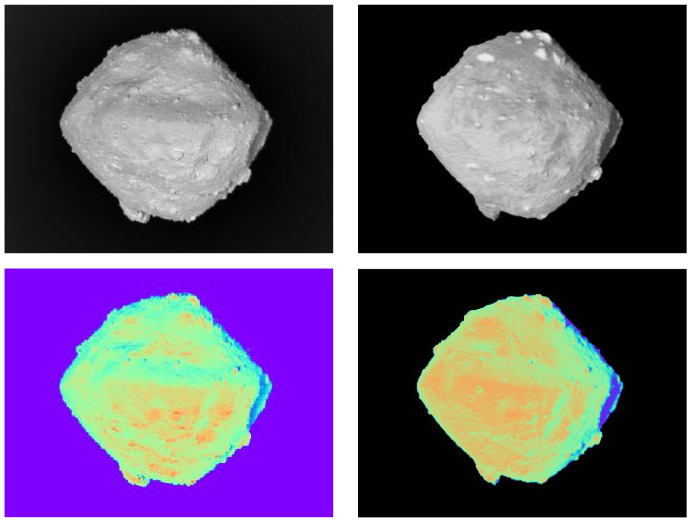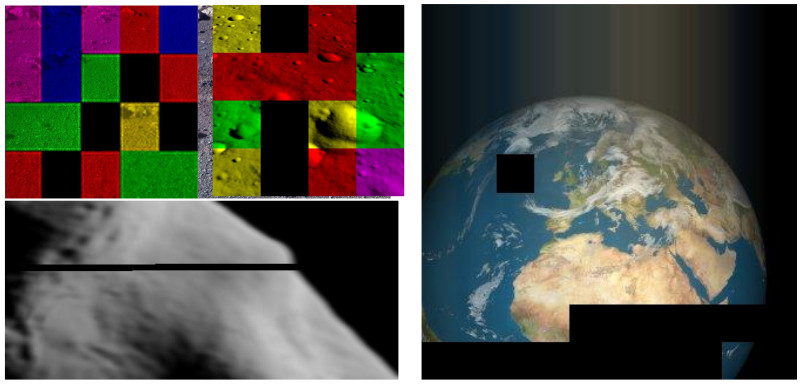PANGU v6.01 was released on 2021-Sep-15. It adds the ability to generate thermal infra-red (TIR) images of natural bodies (such as the Moon and asteroids) and artificial bodies such as spacecraft, as well as the ability to simulate communication errors.
Thermal rendering of natural bodies in PANGU uses a look-up table (LUT) system where temperatures are defined as a function of relative time of day and latitude. The local time and effective latitude of each pixel (based on local topography) is computed and used to determine the emitted thermal radiance. This model is based on the results of the LRO/Diviner experiment and the observation that many objects follow a similar cyclic evolution of temperature over time, and that the daytime temperature is primarily a function of the local incidence angle of the Sun. This thermal model has been validated against real thermal infrared images from Clementine/LWIR images of the Moon, and the recent Hayabusa2/TIR images of asteroid Ryugu as shown below.

Thermal rendering of artificial bodies uses a zero-capacitance/zero-conductance model based on thermal balance equations. It includes contributions from background radiation, direct solar, indirect solar (planet albedo reflections), planet emission and internal heat sources. This model is applicable to materials such as MLI which cover the outside of many spacecraft surfaces. Dynamic control of internal heat sources within the spacecraft may allow surfaces with larger thermal inertia to be simulated more realistically. Lack of publicly available in-orbit thermal images of spacecraft makes it difficult to validate this model so PANGU results have been compared with data obtained from ESATAN.
The PANGU model of communication errors is based on the division of an image into components such as colour planes and image tiles, the serialisation of pixels within those units and the application of burst errors to them. Burst errors are defined in terms of the time between bursts, and the length of the burst, both with random variations; bursts can happen multiple times in a frame. The effect on the generated image depends on the smallest unit of recovery (e.g. a pixel, a row, or a tile). For example, if the unit is a row then any rows that have pixels affected by a burst error will be replaced by the erorr colour (typically black). An example of different kinds of communication errors is shown below.

The top-left noisy tiled image above is PIA23248 from the MSL spacecraft with a PANGU approximation overlaid to its right. The bottom-left image is a PANGU recreation of a multi-line drop-out observed in NEAR/MSI image m0148908992f4_2p_iof of asteroid Eros. The bottom right image is an RGB-tiled PANGU image of the Earth with reset smear affected by three burst errors of different lengths.